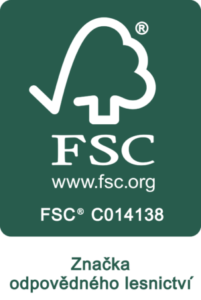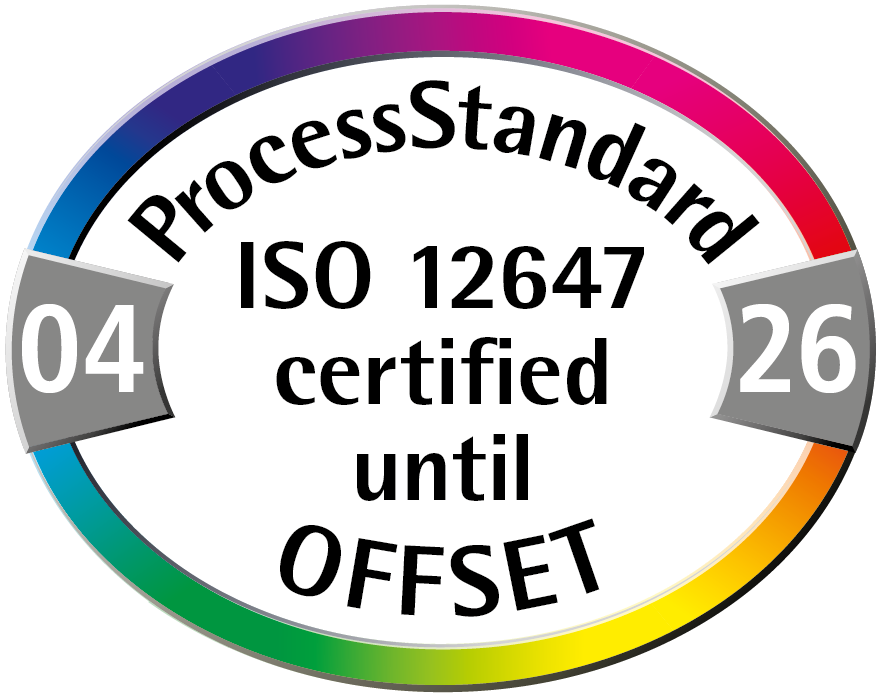Text: Pavlína Badurová
The Feitzingers ran another family business dealing with “black art” in Těšín.
The Fetzinger family was an old Austrian family of booksellers, bookbinders, printers and publishers.
The grandfather, Johann Josef Feitzinger, was a wine merchant and bookbinder. At the end of the 18th century, he moved to Opava, where he and his wife founded a company. The family produced several descendants who remained faithful to their father’s trade and ran bookbinding, bookshops, publishing and stationery shops not only in Opava, Těšín, Bielsko, but also in Vienna. The Opava bookbindery, later expanded with a printing house, remained in the family ownership until 1945.
One of Johann Josef’s sons, Eduard Cyrill Feitzinger (1808-1868), moved to Těšín in 1830 and in 1835 opened a bookbinding workshop, which was later joined by a stationery shop and a book rental. It is reported that in 1862 the book shop had up to 4,000 volumes of books at its disposal.
All four sons of Edward Cyril: Carl (1841-1871), Heinrich (1848-1922), Eduard the Younger (1851-1932) and Gustav (1854-1934) were all associated with the publishing, printing and selling of books.
After his father’s death, they took turns in the management of the family business – the eldest Carl took over the business in Těšín in 1868 and a year later expanded the business to include books, music and art objects. For unknown reasons, he moved to Wiesbaden in 1871, where he later died.
Heinrich succeeded him in the family business. Although he received his education and experience in a completely different industry – construction – he continued the family tradition after the death of his brother Carl. After gaining experience as a construction foreman and managing director in Budapest and Bílsko, he returned to Těšín to become the owner of the family business in 1873. Together with his youngest brother Gustav, they expanded the existing business to include a printing house. From 1880 the company was called ‘H. Feitzinger, Buch-, Kunst-, und Schreibmaterialien, Buch- und Steindruck, Zinkographie, Buchbinderei, Geschäftsbücherfabrik Sofie Fabrik von Kopierpressen, Verlag der Vaterländischen Schreib- und Aufgabehefte in Teschen’. In the same year (1880), the brothers also founded a similarly oriented company in Vienna, where they both subsequently moved. In 1894 Heinrich Feitzinger founded a commercially successful photo studio there.

The headquarters of the company remained on the Upper Square (Rynek, Cieszyn). The printing house was located from 1883 in newly built buildings on the left bank of the Olza River on Střelniční Street (today’s Český Těšín, the building of the former Vratimov paper mills, now the Albert store). The plant had modern equipment for its time, which enabled the production of colour prints.
At the same time, the last of the brothers – Eduard junior – is becoming an entrepreneur. Eduard Paul Philipp Feitzinger (1851-1932) graduated from the gymnasium in Těšín. He gained professional experience with his father and then with his older brothers. In March 1875, he founded his own publishing house in Horní náměstí, No. 10 (Rynek, Cieszyn), to which he later added a shop selling books, paper and school supplies. He was an extremely courageous entrepreneur and is generally considered to have been one of the most successful in Těšín. It is stated that by 1894 he had published over two hundred titles, most of which were in Polish and German. These were mainly hymnbooks, prayer books, textbooks, calendars, directories, tourist guides and plans. Very popular were adventure, sensational and entertaining books, which, although they did not have high ambitions in terms of literary and editorial standards, were published in large editions, the so-called ‘Feitzinger books’. Many of the titles were printed in the factory of his brother Heinrich Feitzinger.
The printing house suffered considerable losses in a fire, which is reported to have engulfed the company in early March 1887. The business was eventually transferred to the new owner, Fritz Kutzer. For some time the company still used the name “H. Feitzinger – successor”, but practically since the end of the 19th century the company has been doing business under the name “Buchdruckerei und Geschäftsbücher Fabrik Kutzer & Cie.” or “Kutzer & Co.”
Fritz Kutzer and his partner Franz Machatzke started slowly, but clearly chose the right strategy. Although it was initially a small printing house with 12-15 workers, by 1900 it employed a total of 164 workers. It was no match for the established Prochaska printing house in terms of production volume. They chose a different product range and specialised in the production of business books. Gradually they developed into the largest producers in the Austro-Hungarian Empire. They also produced stationery and office supplies. In addition to the printing works, the factory also had a lithographic department, a production of notebooks and drawing pads, school notebooks, stationery and a paper and art shop. In addition to a few steam-powered machines, the extensive and high-quality production was mainly handmade. The company had warehouses in Vienna, Budapest and Lvov.
Kutzer’s printing house also, like Prochaska’s enterprise in 1883, was awarded the title of c.k. court contractor in 1901. Its products were awarded at many national and international exhibitions of graphic arts. This testifies to the high level of the Těšín printing industry in general.
As it was already written in the last part of the series, the title of imperial-royal court contractor was an element that connected some Těšín businessmen with Vienna in a special way. Originally, it was associated with the privilege for a company to supply goods to the imperial court. In the second half of the 19th century it was only an honorary title, but it gave the right to place the imperial double-headed eagle on company signs and products. It was an honour for the company and its owners, as the best companies and products in the industry were marked with this mark. In Těšín, the title of Imperial Court Suppliers was awarded to companies operating in the economic sectors for which the town was famous, i.e. printing, trade, photography and alcohol production.

After the split of Těšín and the establishment of Český Těšín in 1920, the printing house continued to concentrate on the lucrative production of commercial books and exported its products to many European countries, even to America. After the death of the owner in the 1920s, the management of the business remained in the hands of the family. At that time, the company employed approximately 200 people, but its financial situation was deteriorating. Under the name “Kutzer and Co.” the company continued during the Second World War, after which the owners left for Austria. The company was taken over by the Czech state and converted to paper production.
Let’s go back to the end of the 19th century – at the same time as the new owner Fritz Kutzer took over the printing house, Eduard Feitzinger Jr. continued his business. In 1889, after the death of the publisher Georg Kotula, he took over the management of his publishing house and continued its activities.
He was very fond of travelling and took up alpine hiking. As a member of the Těšín section of the Beskidenverein, he published a tourist guide to the Beskydy Mountains and later a guide to Těšín and its surroundings. He also sold cameras in his shop. He liked to take photographs himself and even lent his own darkroom to other enthusiasts. He managed to combine his two greatest hobbies – travelling and photography – very successfully – since 1898 he has been publishing postcards.
This idea gradually overwhelmed the original business. Its success is undoubtedly due to excellent timing. The turn of the 19th and 20th centuries is often referred to as the ‘golden age’ of postcards in connection with the spread and greater accessibility of colour printing technology. Another factor significantly influencing sales was the fact that Těšín was at that time a garrison town with more than two thousand soldiers who preferred to use a nice postcard to send messages to their loved ones rather than a more expensive letter.
The postcards he issued of spa and tourist places in the monarchy were given to dealers on credit, always payable at the end of the spa season. Thanks to these conditions, he became an almost monopolistic producer in this field. By 1918 he had published more than 2,100 postcards in several reissues and series. He was not only devoted to his hometown, but also to the whole of Silesia, Moravia and Hungary (today’s Slovakia). He photographed a considerable number of the images he used himself. Among his postcards, his Tatra series are highly collectible.
Feitzinger’s postcards not only adorn collections nowadays, but they have also won awards in the past, for example at the Jubilee Postcard Exhibition in Nuremberg in 1907 they received a gold medal.
Already in the early years of the First World War and also after the collapse of the Habsburg monarchy in 1918, the company was in a financial crisis because some customers could no longer pay for the goods they had purchased. The publishing house was closed down and the company continued to sell only books and stationery. The financial losses were considerable, so Eduard junior handed over the management of the company to his son Hermann (1882-1945), a chemist by training. However, he continued to be part of the company until his death on 30 September 1932.

The history of the publishing family came to an end after more than a hundred years in 1945, when Hermann Feitzinger died in an internment camp in Opava, where he had been interned as a German after the end of the war.
Pavlína Badurová
I was born in Český Těšín and I studied history at the Silesian University in Opava. Since 2002 I have been working in the Museum of Těšín Region, initially as a historian and curator of collections, and currently as the head of the Historical Building of the Museum of Těšín Region in Český Těšín.
My parents worked in a printing house. I am sure it stems from them – love and respect for books, fascination with the process of book production. As children, my brothers and I were very lucky and sometimes we were able to look “under the hood” of the printing house. I still remember it – the impressions, the sounds, the smells.
Through my studies and employment, I got into regional history. Prochaska’s print shop is simply my best-loved!






